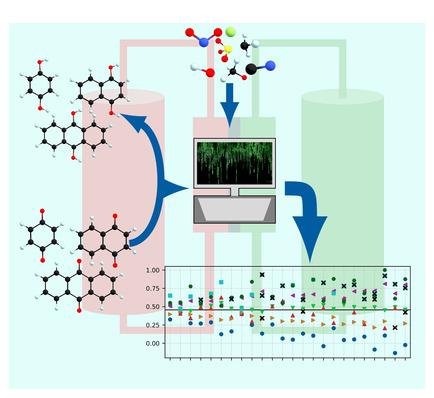当前位置:
X-MOL 学术
›
ChemSusChem
›
论文详情
Our official English website, www.x-mol.net, welcomes your
feedback! (Note: you will need to create a separate account there.)
Substituent Pattern Effects on the Redox Potentials of Quinone-Based Active Materials for Aqueous Redox Flow Batteries.
ChemSusChem ( IF 7.5 ) Pub Date : 2020-08-14 , DOI: 10.1002/cssc.202000454 S Schwan 1, 2 , D Schröder 1, 2 , H A Wegner 2, 3 , J Janek 1, 2 , D Mollenhauer 1, 2
ChemSusChem ( IF 7.5 ) Pub Date : 2020-08-14 , DOI: 10.1002/cssc.202000454 S Schwan 1, 2 , D Schröder 1, 2 , H A Wegner 2, 3 , J Janek 1, 2 , D Mollenhauer 1, 2
Affiliation

|
Quinone‐based, aqueous redox flow batteries are a promising technology for large‐scale, low‐cost energy storage. To understand the influence of substituent and substituent pattern effects of quinone‐based derivatives on the redox potential, a screening study was performed that included benzoquinone, naphtaquinone, and anthraquinone derivatives. The order of substituent influence is −OH>−Me/−OMe for decreasing the redox potential and −F<−SO3−<−CN, −NO2 for increasing the redox potential, which is in agreement with general expectations. We found that the consideration of resonance and inductive effects design strategies of redox‐active materials can be extended by the ability of intramolecular hydrogen bond formation, steric hindrance, and energetic differences of conformers for oxidized and reduced species. Due to the complexity and overlap of these effects, theoretical screening studies can provide guidance for the design of new molecular materials. In addition to the redox potential, other parameters such as stability, solubility, and kinetic rate constant or synthetic accessibility are crucial to consider.
中文翻译:

取代模式对水系氧化还原液流电池醌基活性材料氧化还原电位的影响。
基于醌的水系氧化还原液流电池是一种有前途的大规模、低成本储能技术。为了了解醌基衍生物的取代基和取代基模式效应对氧化还原电位的影响,进行了一项包括苯醌、萘醌和蒽醌衍生物的筛选研究。对于降低氧化还原电位,取代基影响的顺序是-OH>-Me/-OMe,对于增加氧化还原电位,取代基影响的顺序是-F<-SO 3 - <-CN,-NO 2,这与一般预期一致。我们发现,氧化还原活性材料的共振和感应效应设计策略的考虑可以通过分子内氢键形成的能力、空间位阻以及氧化和还原物质的构象异构体的能量差异来扩展。由于这些效应的复杂性和重叠性,理论筛选研究可以为新分子材料的设计提供指导。除了氧化还原电位之外,稳定性、溶解度、动力学速率常数或合成可及性等其他参数也至关重要。
更新日期:2020-10-22
中文翻译:

取代模式对水系氧化还原液流电池醌基活性材料氧化还原电位的影响。
基于醌的水系氧化还原液流电池是一种有前途的大规模、低成本储能技术。为了了解醌基衍生物的取代基和取代基模式效应对氧化还原电位的影响,进行了一项包括苯醌、萘醌和蒽醌衍生物的筛选研究。对于降低氧化还原电位,取代基影响的顺序是-OH>-Me/-OMe,对于增加氧化还原电位,取代基影响的顺序是-F<-SO 3 - <-CN,-NO 2,这与一般预期一致。我们发现,氧化还原活性材料的共振和感应效应设计策略的考虑可以通过分子内氢键形成的能力、空间位阻以及氧化和还原物质的构象异构体的能量差异来扩展。由于这些效应的复杂性和重叠性,理论筛选研究可以为新分子材料的设计提供指导。除了氧化还原电位之外,稳定性、溶解度、动力学速率常数或合成可及性等其他参数也至关重要。











































 京公网安备 11010802027423号
京公网安备 11010802027423号